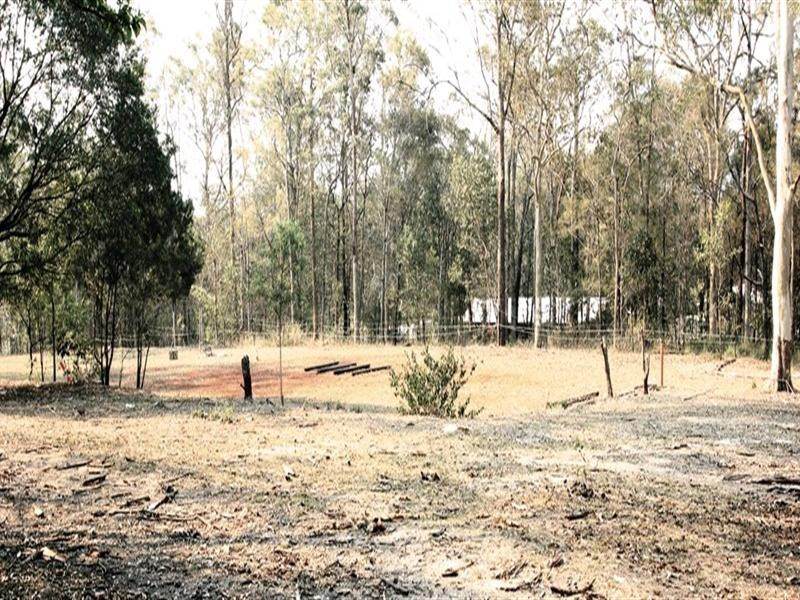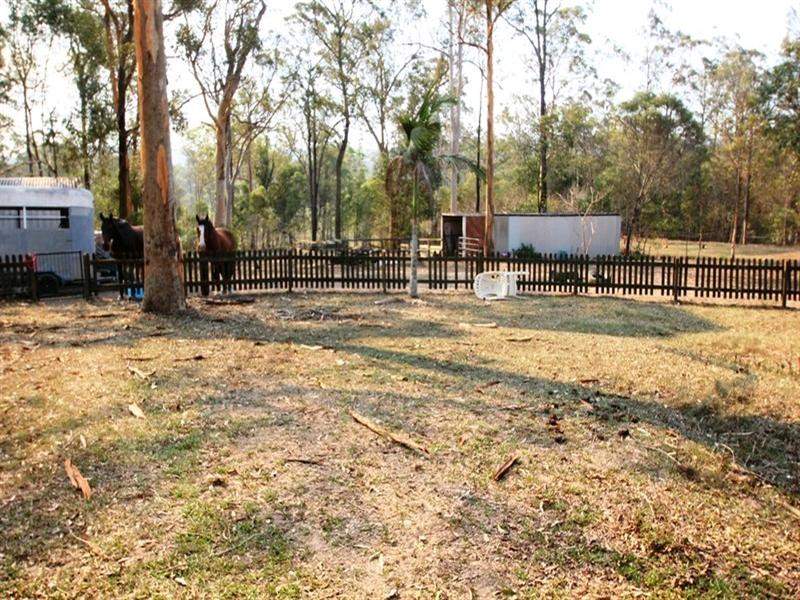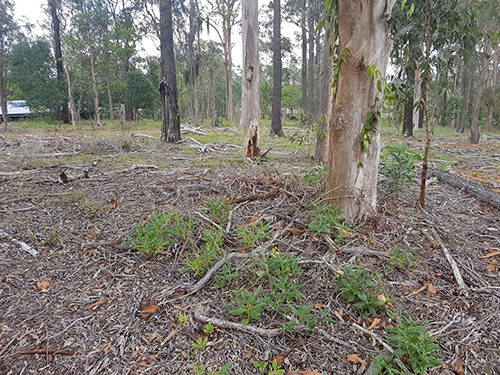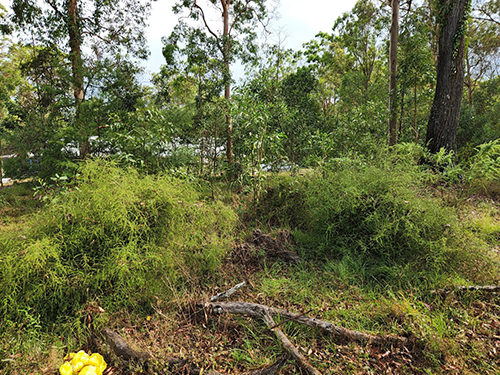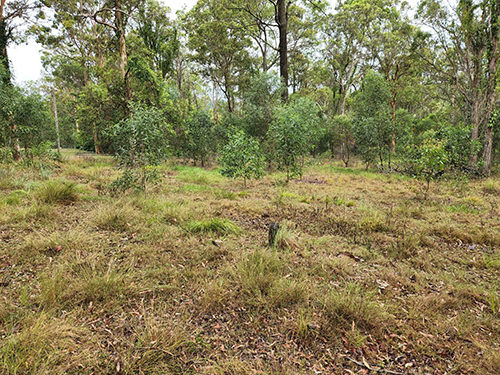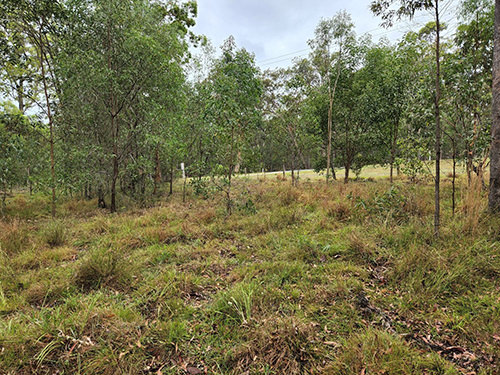Like a growing number of Australians, James and Simone Lane’s story began with a tree change – borne from the desire for their children to grow up playing in a pollution-free and spacious environment that only regional living could offer. Their ideal property needed to be relatively close to Brisbane’s CBD and their places of work while still maintaining privacy from neighbours and the world. After a year of searching and waiting, paradise was finally found in a ten-acre block in Cornubia, a verdant suburb in Logan’s east. The acreage had everything on James and Simone’s wish list and more, with one considerable catch – the property was a badly degraded former horse paddock.
The previous landowner had rented out the property for many years, including most recently to tenants with horses. The block was fenced off into half a dozen paddocks with many of the wattles and other mid-storey vegetation removed, leaving only the mature gumtrees spaced around 10-20 metres apart. The horses left a legacy of ringbarked trees, razed grass and bare ground interspersed with blue billygoat weed and lantana thickets. There was very little wildlife except for the usual wallabies, magpies and good old Noisy Miners.
When James and Simone settled in late 2015, they quickly set about pulling down all the internal fencing to allow greater freedom of movement for wildlife. This literal breaking of barriers proved to be symbolic as well, leaving the couple with a clean slate to begin restoring the land to some semblance of its former glory. Soon after, they joined Land for Wildlife with Working Towards Registration status.
Armed with an abundance of knowledge from the internet and their local Land for Wildlife Officer, James and Simone got stuck into weed control and revegetation. With some trial and error, they learned what was and wasn’t a weed, and what natives would and wouldn’t grow on their land. Herbicide was crucial for taking on the large extents of Singapore Daisy and Lantana, with hand-weeding enough to control the remaining weeds. Even now, most unwanted plants are pulled out while strolling the property and enjoying the space.
Early in their journey, James and Simone learned the importance of water. Though it may seem obvious, keeping the soil moist and plants hydrated was not easy in a land of long dry spells. Fifty dollars bought them 10 cubic metres of mulch to lay across the barren areas, working to hold in moisture, suppress weeds and return much-needed nutrients to the soil. On areas of hillsides, the mulch was laid out to create contour banks to slow the outflow of water and keep as much on the property as possible. Any dead or fallen branches were laid across the flow of water or on the barren ground, with neighbours even donating their ‘rubbish’ to the cause. These simple additions created habitat for insects and other wildlife who gratefully returned the favour by adding their own mulch to the mix. The property’s dam was put to good use with the addition of a dam pump and plenty of two-inch hosing to flood irrigate the high areas, as well as bring water to all the planted tube stock from Land for Wildlife incentives. The secondary benefit of pumping from the dam is the removal of nutrients and reduction of aquatic weeds.
All the hours spent unloading logs, mulching and pulling weeds paid off in multitudes and they were upgraded to the Land for Wildlife Registered status only two years later. Those lucky enough to visit this beautiful property would find it inconceivable that an area so lush and full of life was once a barren paddock.
Before…
Property advertised online for sale.
Basically it was a degraded horse paddock.
After…
Diverse native grasses and natural regeneration of trees.
“While it has probably taken longer than we expected, it is a pleasure to see the transformation that has been made. We see much more wildlife from lizards and birds to the odd wandering echidna taking advantage of the white ants that enjoy munching on all the mulch. It is cooler in the hot months too, as the wind is cooled blowing through all the undergrowth. If there is one piece of advice we could offer to others just starting out it would be this: water. Keep as much of it as possible on site. Just support the land and mother nature will do the rest. While planting is important, the effort in doing so is better spent on supporting what is already there. Just plant for biodiversity.” James and Simone
Article by Michelle Mogilski
Land for Wildlife Officer
Logan City Council, and
James Lane
Land for Wildlife member
Cornubia, Logan

